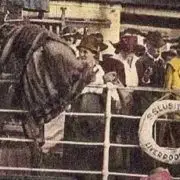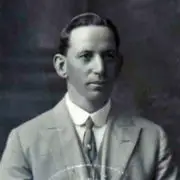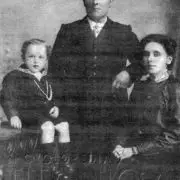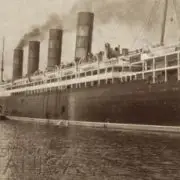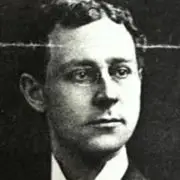The Lusitania : Part 7 : Passengers of Distinction
Maude Thompson, one half of an extremely appealing young couple parted by the disaster, eventually became the second of three Countesses among the Lusitania’s survivors.
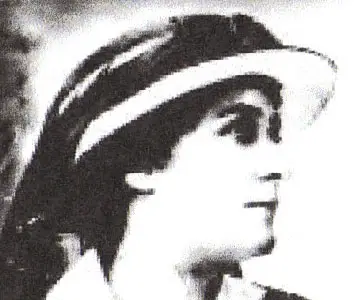
It was clear from the day Maud Robinson was born, October 25, 1882, that she would be afforded many excellent opportunities in life. Her parents were affluent residents of Long Branch, New Jersey. She was descended from Martin Kalbfleish, a two term Mayor of Brooklyn. Maud believed in being assertive, even penning an article on the problems of sensitive girls and how they may overcome their handicaps: “Pity the sensitive girl… give me the jolly girl who is perfectly natural and who takes on the world as she finds it and the people as she finds them, too, without worrying over the impression she is making.”
It is not clear how and when Maud Robinson met Elbridge “Blish” Thompson, but they married in 1904, the same year he graduated from Yale University. The ceremony took place on March 31st.
Elbridge Thompson was born on October 2, 1882 in Seymour, Indiana. His family owned the prosperous Blish Milling. He attended Andover and Lake Forest, and studied Metallurgy at Yale.
The couple moved to Colorado shortly after their marriage; Blish was interested in developing mining property there. They moved back to Indiana a year later, and he was elected secretary of Blish Milling. The Thompsons were active in politics, and Elbridge was a leader in the Republican County Organization. He and ‘Maudie,’ as he affectionately called her, took part in community affairs such as ‘The Festival.’ He drove his roadster, uniquely decorated as a battleship, while his wife good-naturedly rode by his side.
The Thompsons planned a three month trip, combining business and pleasure, on which they would tour England, Scotland, and Ireland. They booked passage on the Lusitaniaand were assigned cabin, A-21. A few days later they upgraded to a suite with a private bath, B-68, for which they paid $500.
Maud and Blish enjoyed their vacation, spending time with other couples, such as Harry and Mary Keser. They befriended a pair of families with children; the Hodges and the Lucks. It turned out to be a wonderful voyage for them, comparable to a second honeymoon. They made plans to awaken early on May 7th to watch the sun come up:
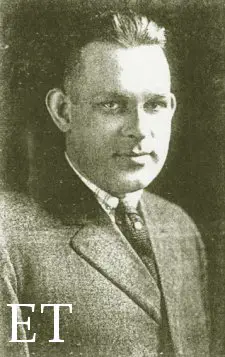 |
| “Blish” Thompson. Courtesy Charlotte Sellers. |
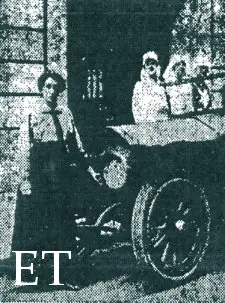 |
| Maude Thompson Mike Poirier Collection |
About 4:30 or 5:00 A.M., the day of the disaster, husband and myself had dressed and were standing on ‘A’ deck to watch the sun rise. At that time, we saw a battleship off on port side and traveling in the same direction as the Lusitania. The latter was moving very fast at this time. The battleship was close enough so that we could see the whole vessel and its lines distinctly. The fact of the presence of this battleship has not been mentioned, to the writer’s knowledge, by anyone.
We were eating lunch at the time the torpedo struck the ship. Just a few minutes previously I had noted the ship’s clock in order to set my watch, and I remember that it was just 2:05 P.M.
The impact of the torpedo against the ship could be plainly felt; the noise of the impact, however, was not like that of an explosion but made a “jamming noise” like a heavy boat will make in rubbing against a piling, for instance. There was no noise at any time like an explosion, and no further sound following the striking of the torpedo.
My husband and I immediately jumped up from the table, the former exclaiming “we are torpedoed!”
We immediately ran up the stairs leading from the dining saloon. On the stairs was the only time and place that we saw any of the ship’s stewards or officers (except one). They told us to take out time and keep calm.
We went immediately to B deck and helped Mr. and Mrs. Hodges and their two small boys. The entire Hodges family was lost. After arriving at b deck, Mr. Thompson went to his cabin, B-68, to get life belts. He returned with two life belts, also coats and sweaters, which we put on. After a moment he went back again to his cabin for his passports and money.
After rejoining me, we went up on the A deck. On A deck we saw the Keser family of Philadelphia, and also Mrs. Luck and her small sons. Mrs. Luck had no life belt, and Mr. Thompson removed his and together we put it on Mrs. Luck. These were the only people whom we saw at this time and place.
While on the A deck, the single member of the ship’s crew above referred to came past us. He was telling the crowd, “The ship is perfectly safe. You are alright.” at this time and place, also, the writer heard the order given from the bridge “Lower no more boats.”
After we had been on this deck about ten minutes the boat sank, plunging bow foremost with extreme suddenness. The plunge was entirely without preliminary warning. Previous, the ship had listed to starboard to such an extent that it had been difficult to walk up stairs. Impossible to say how far the ship had settled prior to sinking.
When the ship plunged, it stood up almost perpendicular and thereby swept everyone overboard in a mass, and we were swept half the length of the ship. The writer does not remember striking the water. The first sensation came to her under the water. Did not see her husband again after the ship plunged.
The writer was in the water only a short time and was picked up and taken on a small raft, on which there were fifty others, of which only a small number, about fifteen, were passengers. Was pulled about the raft by Guy R. Cockburn, 10 Warrington Crescent, Mada Hill, London W. England.
We were three hours on the raft and were being carried out to sea when the party was picked up by the tramp steamer Kretnia [Katrina- authors] The crew on this boat did everything possible to assist those whom they had rescued. We were taken to Queenstown.
Maud was taken to the Admiralty House with Amy Pearl and Rita Jolivet. Rita claimed to have taken the two women down to the Queens Hotel to care for them and Lady Allan. There was no sign of Elbridge, so she sent home a telegram that read, ‘Maudie safe.’ Unfortunately, it was transcribed incorrectly, and read ‘Maud safe I also.’ The following day, she sent another saying,‘ I am safe waiting news from Blish.’ The family, confused by the contradictory messages, questioned the telegraph operator from Mays, Indiana and learned that a mistake had been made.
Maud continued searching, but could not find any trace of her husband. She sent another telegram asking for advice as to what to do. She finally decided to proceed to London, to the house of her friend Mr. Raikes, to await any further developments and to convalesce.
She was ready to come home by June. There had been no word of her husband for almost a month so there was no sense in remaining overseas any longer. She booked passage on the St. Paul, which was to arrive in New York on June 13, 1915. The St. Paul carried home many Lusitania survivors; James Leary, Charles Sturdy, Herbert Colebrook, Doris and Joseph Charles, Percy Rogers, Ogden Hammond, and Virginia Loney, listed as Virginia Sedgwick. Two Titanic survivors, Robert and Eloise Daniel were also aboard. Maud’s sister and some Thompson relatives met the ship.
Elbridge Thompson’s memorial service was held on June 18th, at the First Presbyterian Church in Seymour. Reverend Lewis Brown, who delivered a short address on “Immortality,” conducted it. People from all walks of life attended the service; from employees of Blish Milling to Blish’s roommates from Yale. Soon after, Maud endowed Yale with a scholarship of $600 annually to the Sheffield Scientific School, which was to be awarded to graduates of Shields High School, Seymour, Indiana.
Blish’s two cars sat in the garage of the Thompson home. Maud decided that she would have the National roadster rebuilt as a scout car. She took the other National, a touring car, to France herself and turned it over to the Red Cross. She decided to stay and work with the humanitarian organization throughout the war. She met Count Jean de Gennes, a French fighter pilot. He was twelve years her junior, but despite their age difference, they fell in love. The two married on November 17, 1917 in Paris. She gave birth to a son, Jean-Marie, on December 20, 1919. When the child was a year old, Maud and the Count took him to visit with Blish Thompson’s relatives. Maud still had an active interest in the Blish Company, and she occasionally returned for board meetings, but she considered France her home.
Maud’s marriage was a happy one but, once again, tragedy struck. Her husband, a pilot for Compagnie Aeropostale, was killed in a plane crash in 1929. She was left with a nine-year-old son to raise. She may have considered moving back to the United States to be near her family, but she ultimately chose to stay in France.
Maud remained in Paris through World War 2. Her son, Jean, joined the Free French, crossing the Pyrenées in November 1943, and was soon fighting for RAF, aboard a Halifax on bombing raids over Germany
The Countess de Gennes returned to the United States aboard the French ship, Desirade, in early 1946, and settled in New York. Her son was working for Air France by that time. She spent the remainder of her days in Sunnyside, Queens, passing away on May 17, 1951. Her final wish was to be buried in France, and so she was buried in Paris, beside her husband, in the Montparnasse Cemetary.
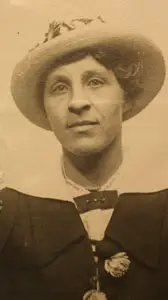
Charlotte Luck, to whom Blish Thompson surrendered his lifebelt, did not survive, nor did her sons Elbridge, 12, and Kenneth, 8. Charlotte and her children had stayed in San Francisco with her mother, Mrs. Field, during Arthur Courtland Luck’s extended business trips abroad, although their home was in Worcester, Massachusetts. None of the bodies were recovered, and Mr. Luck was eventually awarded $20,000.00 for the loss of his family. Frances Lapham Field, Charlotte’s mother, was awarded $5000.00 for the loss of her daughter’s financial support.

